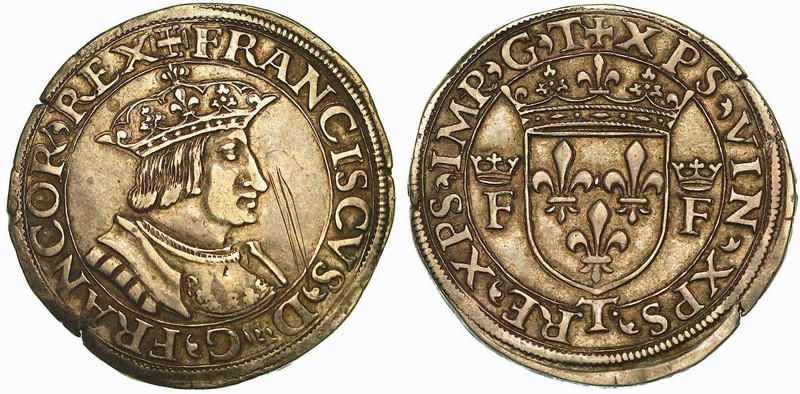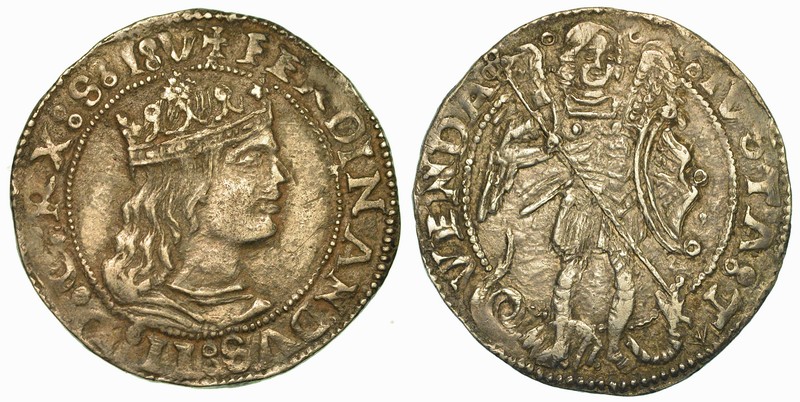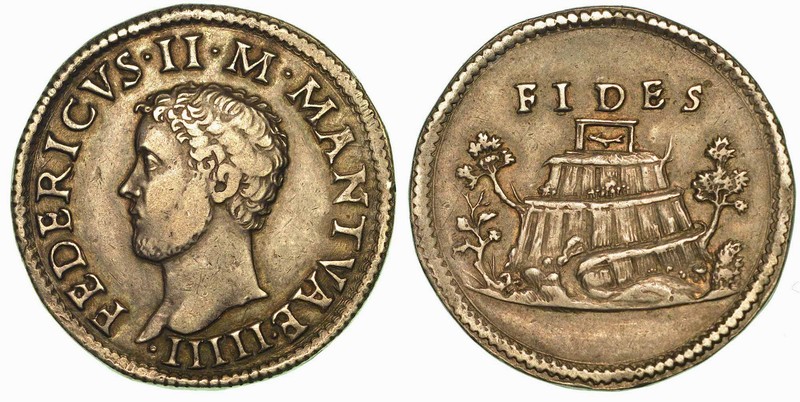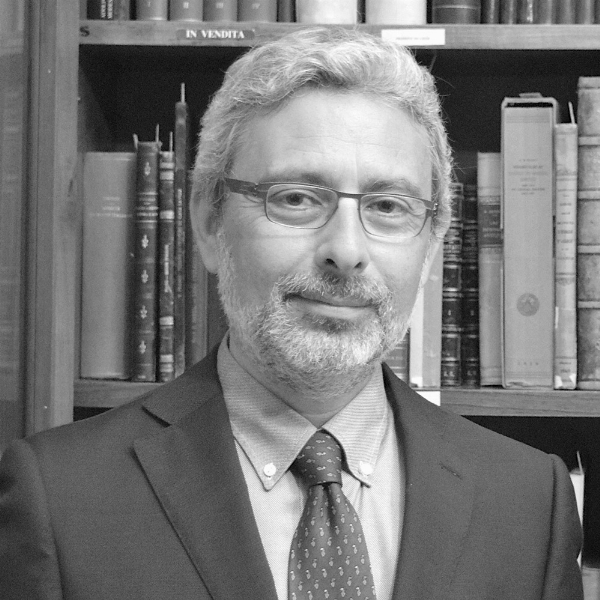Live auction 809
Numismatics | Renaissance
Milan
thu 25 May 2023



On the afternoon of Thursday 25 May, the second round of the auction is dedicated to Renaissance numismatic art, and features an extraordinary collection of 62 coins, collected by a refined collector over thirty years, which represent a splendid overview of portraits of the Dukes of some of the major Italian seigniories of the time, from the Estes to the Medicis, from the Gonzagas to the Sforzas, from the Farneses to the Fieschis.
It was during the Renaissance that coins once again performed their function of communication and propaganda, and it was precisely the great dukes who called the best engravers of the time to the mints to portray their faces on the coins issued by their cities, taking as a model the coins of the Roman Empire, the portraits of the emperors and the allegorical figures on the reverses.
So it is not surprising to find in a Testone from Ferrara minted in the early 1500s for Ercole I d'Este, together with his portrait, a male figure on horseback as in the gold coins of the Emperor Hadrian. According to the scholar Philip Grierson, this figure was probably inspired by the famous equestrian statue commissioned from Leonardo da Vinci by Hercules' son-in-law, Ludovico il Moro, and never made due to technical and political difficulties (the bronze destined for the statue was used to build cannons for the war ).
Another extraordinary coin up for auction is a very rare Testone minted in Modena by Alfonso I d'Este, probably after the reconquest of the city in 1527, which portrays, together with the face of the late duke, on the reverse, the figure of the patron saint of the city, San Geminiano who, in flight, saves a child who has fallen from the tower of the cathedral. A coin of extraordinary quality of which unfortunately the author of the very fine engraving is not known.
Many of the signatures of great engravers who created some of these coins, such as the Testone di Firenze by Alessandro de' Medici, 1532-1537, the work of the great sculptor and engraver Benvenuto Cellini (1500-1571), issued in 1535. For the hairdo of Alessandro this large head was called by the Florentines "hedgehog" and on the reverse it bears the figures of Saints Cosmas and Damian, protectors of the art of doctors and apothecaries and of the Medici family.
The work of the sculptor and engraver Leone Leoni (1509 - 1590) is instead the 25 Soldi Denaro of the city of Milan minted for the emperor Charles V of Habsburg, which shows on the reverse the figure of the Salute holding a rod and in the right hand a patera, with which he feeds a snake coming out of an altar. At his feet, lying down, is the river Po, with an amphora from which water flows.
Among the Top Lots of this round a Testone by Francesco I D'Angouleme, 1515-1547 of which very few specimens are known (estimate 25,000 - 30,000 euros), a Carlino by Ferdinand II of Aragon, 1495-1496 (estimate 25,000 - 30,000 euro), coin of the short reign of the young king known as Ferrandino and much loved by his subjects, and a Testone of Federico II Gonzaga, 1519-1540 datable before 1530, when Federico Gonzaga was appointed duke by the emperor Charles V, while here it is still only Marquis of Mantua, as stated in the legend. On the reverse, the feat of Mount Olympus, one of the duke's favorites, because Mount Olympus, as an inaccessible peak, was a symbol of the greatness achieved by the Gonzaga house (estimate 25,000 - 30,000 euros).
Due to the beauty and historical and numismatic importance of this collection, the catalog of the second edition will almost certainly become an important bibliographic tool for collectors.
Experts for the auction


Numismatic
Luca Alagna












